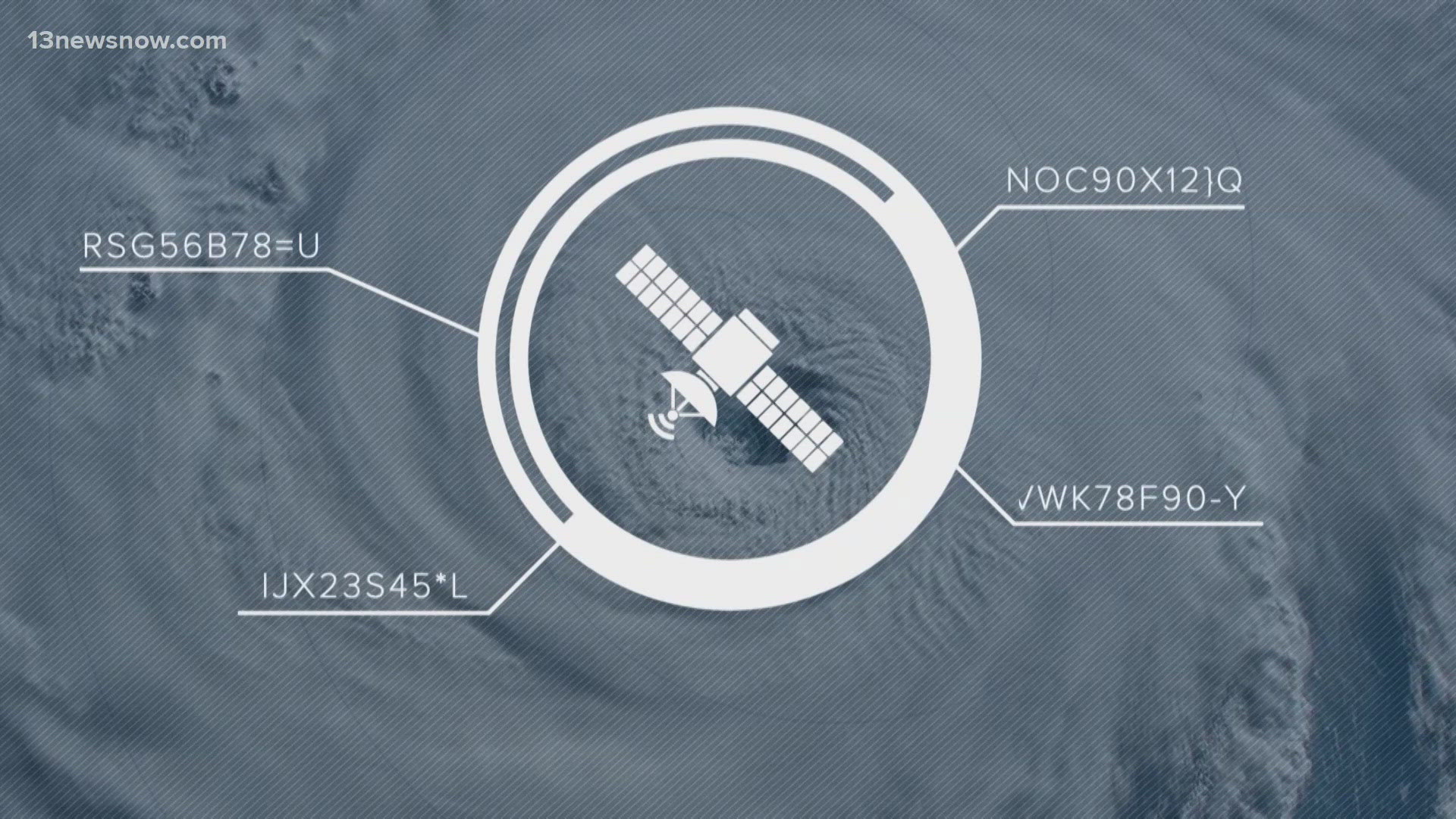NORFOLK, Va. — As we head towards the last week of August, hurricane season normally starts to ramp up and climatologically, this is when we see the strongest hurricanes. But how do we know exactly how strong these winds are so far out to sea?
To get the maximum sustained winds, the National Hurricane Center measures winds 10 m or 33 ft off the ground and it's average over one minute and there are different sensors and techniques that are used depending on where the measurement is being taken.
For instance, tropical storms and hurricanes that are far out to sea are primarily monitored by satellites. Sensors on the satellites and analysis of images can produce some pretty accurate estimates of the wind speed and central pressure of the storms as it moves closer and becomes a threat to land, vital. And more precise data is gathered by the hurricane hunters.
The planes release instruments called dropsondes to measure the winds as they fall to the ocean. According to NOAA, dropsondes measure vertical profiles of atmospheric temperature, pressure, humidity, and wind speed as they fall from the aircraft to the surface. They are equipped with a small parachute that slows their descent and maintains vertical orientation. The dropsonde transmits data by radio four times a second to the aircraft until it reaches the surface of the ocean.
The Hurricane Hunters are also equipped with stepped frequency microwave radiometers that measure surface winds by looking for radiation off the ocean surface. When the storm gets close to land, ground-based NEXRAD Doppler radars give us a close-up and complete view of the wind field.
The maximum sustained winds are the strongest winds found near the eye of the hurricane and the winds are usually a little stronger out over the water where they're free from friction, which is caused by things like trees and buildings which can slow it down. Just because reporting stations or buoys aren't showing the highest winds doesn't mean they aren't happening.
So, as we enter the peak of hurricane season it's important to continue to be prepared.

